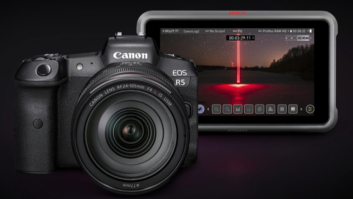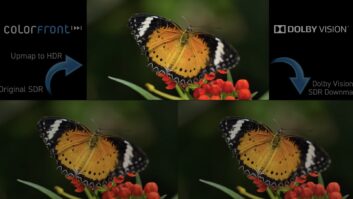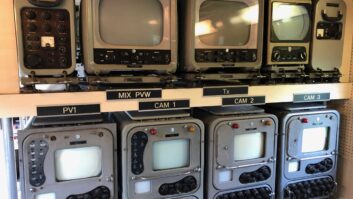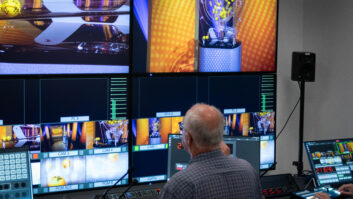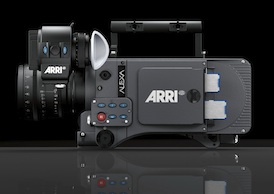
Arri has chosen Apple’s ProRes 422 (HQ) and ProRes 4444 codecs recording on to Sony’s SxS cards as the primary workflow for its Alexa camcorder, writes David Fox.
While it can also output uncompressed HD video and uncompressed Arriraw data, it believes that ProRes will offer the fastest possible workflow.
“It is a combination of the most popular and widely spread codec and probably the fastest recording medium at the moment,” said Milan Krsljanin, Arri Media’s business development manager. The ProRes XML files (including metadata) will be instantly available for use in Final Cut Pro, with no need to transcode – or any quality loss that might entail. “We wanted to get as fast to post as possible,” and the introduction of 12-bit ProRes 4444 (at 330Mbps) in the current version of FCP made the choice “irresistible.”
“The entire post production world is either based on ProRes or [Avid’s] DnxHD,” and “we went with the most popular encoding scheme.” There are at least 1.5milion Final Cut Pro users worldwide and more than half of all broadcast editing systems run the Apple software. The 220Mbps ProRes 422 (HQ) codec is widely used as the finishing format for HD edits.
The SxS cards plug into a PCI Express card reader, making the video instantly accessible on the timeline in full resolution. A 32GB card will record about 15 minutes at 4:4:4 or 20 minutes at 4:2:2, with two hot-swappable cards in the camera allowing longer recording times. The SxS cards can record at up to 800Mbps, and on the Alexa will allow recording up to 1080p60 – ramping from 0.75-60fps. “We are pushing the specification’s limits,” he said.
“The DTE [Direct To Edit] methodology is fully implemented and we really have the fastest workflow on the planet.” Transfers are faster than realtime and Arri calls the result: “tapeless, effortless and efficient.”
Typically, when a new camera format comes to market, users have to wait for the nonlinear editors to support it. By choosing ProRes, Arri has ensured that users will be able to edit Alexa material as simply and quickly as possible.
“This is the only camera that records native ProRes from the start. It is the camera that really leapfrogs the competition,” he claimed, thanks to such features as the “excellent” low-light performance of its Super 35-sized CMOS sensor (starting at 800 ISO), more than 13 stops of latitude, “great colourimetry”, and ability to take 35mm PL-mount lenses in a lightweight, compact package. “This gives extraordinary creative freedom to productions,” said Krsljanin.
The camera also has two 3G HD-SDI connectors, so can record full 2k output on a third-party recorder, such as a Codex Digital, recording to two or three different formats simultaneously, if necessary, with the ProRes version then used for offline. The 3G HD-SDI output for the monitor could also be used for recording.
Users won’t be tied to the SxS format as the Alexa Storage interface Module is removable, in anticipation of different card standards being adopted in the future. The camera’s Electronics Interface Module can also be removed and replaced with any upgraded module, while its Exchangeable Lens Mount system allows the use of PL or Panavision lenses, plus Canon or Nikon stills camera lenses, so that the configuration is reasonably future proof.
The design of the camera has been largely driven by talking to customers, and Arri has endeavoured to make it as simple as possible to operate, with a very straight forward menu structure – all on one page, with easy access. It is intended to be “easy on the set, easy in the post, easy on the budget [and] easy on the schedule,” he added.
Users can also apply Look Files via an SD card, to provide the option of instant dailies straight out of the camera in a directly accessible format, without the usual wait. The Look Files can be applied to the output signals for baking the look in, or can be passed on as metadata in files on the SD card.
The Alexa is currently being used to shoot ‘Anonymous’, a movie directed by Roland Emmerich. Before deciding to use the Alexa, there was a side-by-side test against the new Red Mysterium X sensor. Although the Red is rated at a lower ISO (320) than the Alexa, both produced virtually noise-free pictures at 800 ISO, however, they found that the Alexa could be pushed further – even at four stops underexposed (the equivalent of 12,800 ISO) it was “usable for a certain type of shots (documentary style). Basically, I was absolutely blown away that we even saw anything on the footage,” wrote Marc Weigert, the movie’s VFX Supervisor.
Arri will be taking orders for the Alexa at NAB, where it will be showing the full workflow, with several working units. Delivery is expected in June, with prices from Eur45,000.
Note: Although Arri is the first camera manufacturer to adopt ProRes, users of any HD-SDI or HDMI equipped camera can already record ProRes direct using AJA’s Ki Pro external recorder, although only in 10-bit 4:2:2.
[Update: Arri took more than 100 orders for the Alexa on Day One of NAB]
